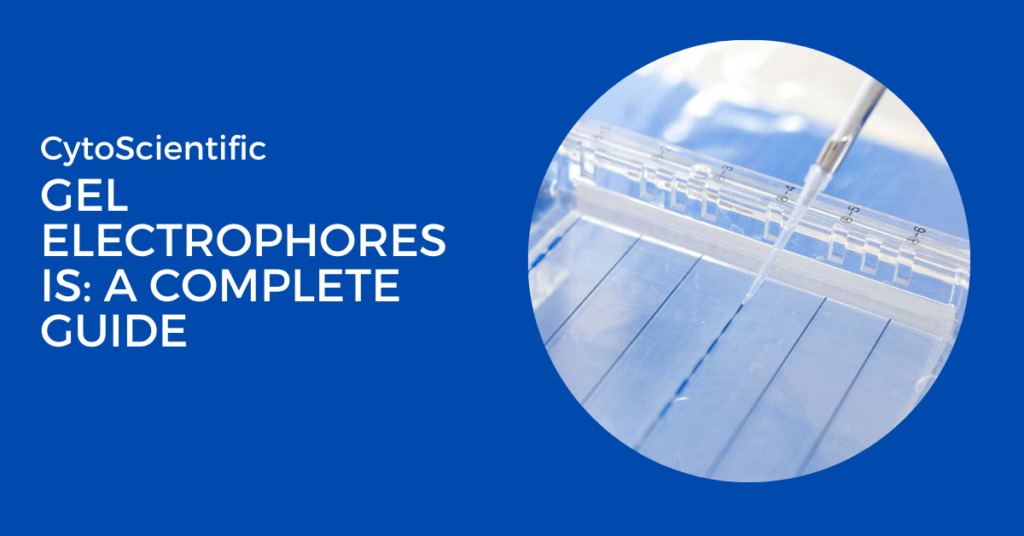Gel electrophoresis is a powerful and widely used technique in molecular biology and biochemistry. It allows scientists to separate, analyze, and purify DNA, RNA, or protein molecules based on their size, shape, and charge. This blog will explore what gel electrophoresis is, how it works, its applications, and why it remains an essential tool in research laboratories.
What is Gel Electrophoresis?
Gel electrophoresis is a laboratory method used to separate macromolecules, such as nucleic acids and proteins, in a gel matrix. The process uses an electric field to move these molecules through the gel, enabling scientists to identify and study their properties. The gel is usually composed of polyacrylamide for proteins or agarose for DNA and RNA. The size of the molecule and the necessary level of resolution determine which gel is best.
How Does Gel Electrophoresis Work?
Using an electric field and a gel matrix, gel electrophoresis separates molecules like proteins, RNA, and DNA according to their charge and size. Here is a detailed procedure:
- Prepare the Gel: Gel preparation involves forming and solidifying a gel, typically composed of polyacrylamide or agarose, on a tray.
- Load the Samples: Sample loading involves carefully pipetting the samples into the wells after mixing them with a loading dye.
- Apply an Electric Field: The gel is placed in a buffer-filled electrophoresis chamber, and an electric current is applied. Negatively charged molecules, like DNA, migrate toward the positive electrode.
- Molecule Separation: Larger molecules move more slowly through the gel matrix, whereas smaller molecules move farther and faster.
- Visualize Results: After the run, the gel is stained (e.g., with ethidium bromide or SYBR Green) to make the molecules visible, often using UV light.
Key Components of Gel Electrophoresis
Buffers: TAE vs. TBE
- TAE Buffer: Offers better resolution for long DNA fragments.
- TBE Buffer: Provides greater stability for high-voltage applications.
Stains
- Ethidium Bromide: A classic but hazardous DNA stain.
- Safer Alternatives: SYBR Green and GelRed offer lower toxicity.
Essential Equipment
- Gel Box and Power Supply: For running the gel.
- UV Transilluminator: To view the results.
Applications of Gel Electrophoresis
- Analysis of DNA and RNA – Gel electrophoresis is essential for genetic research, from sequencing to PCR product verification.
- Protein Separation – Understanding the structure and function of proteins requires the use of polyacrylamide gels.
- Science of Forensics – It is essential to criminal investigations and is used in genetic fingerprinting.
- Engineering Genetics – A crucial stage in the cloning and recombinant DNA technologies is the isolation of DNA fragments.
- Medical Diagnostics – This method has uses in medicine, ranging from tracking illnesses to detecting genetic problems.
Advantages of Gel Electrophoresis
- Efficiently separates molecules based on size and charge.
- Offers high-resolution results for detailed analysis.
- Suitable for a wide range of samples, including DNA, RNA, and proteins.
- Cost-effective and widely accessible in laboratories.
- Provides visual confirmation of molecular separation.
Tips for Effective Gel Electrophoresis
- Use high-quality reagents and buffers to ensure consistency.
- Optimize gel concentration for the size range of your target molecules.
- Handle samples carefully to prevent degradation.
- Follow safety precautions, especially when working with dyes and UV light.
FAQs
How does the buffer function in gel electrophoresis?
The buffer ensures effective molecular movement by maintaining pH and conductivity.
Can proteins and nucleic acids be separated at the same time using gel electrophoresis?
No, because different gel types and conditions are needed for proteins and nucleic acids.
How can gel electrophoresis experiments be made safe?
Be cautious when handling stains like ethidium bromide and wear gloves and eyewear.
Which methods can be used instead of gel electrophoresis?
Advanced substitutes include chromatography and capillary electrophoresis.
Why does DNA have a negative charge?
Due to the negative charge carried by its phosphate backbone, DNA migrates toward the positive electrode during electrophoresis.
Conclusion
Gel electrophoresis remains a cornerstone of molecular biology due to its reliability and versatility. By mastering this technique, researchers can unlock insights into genetic material, protein interactions, and cellular mechanisms. Whether you’re a student learning the basics or a seasoned scientist, gel electrophoresis is a valuable tool in your experimental repertoire.

